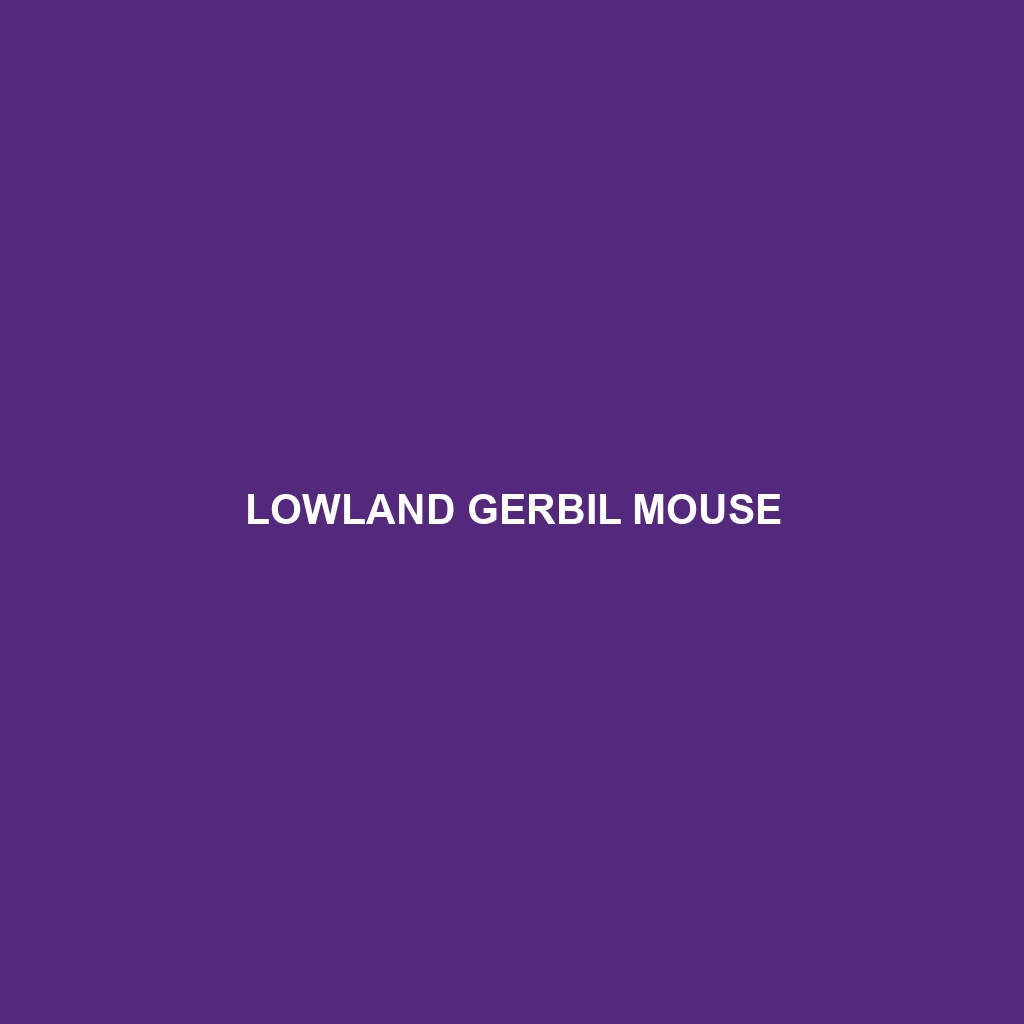Lowland Gerbil Mouse
Common Name: Lowland Gerbil Mouse
Scientific Name:
Habitat
The Lowland Gerbil Mouse primarily inhabits the arid and semi-arid regions of North Africa and parts of the Middle East. These small rodents are commonly found in sandy desert environments, grasslands, and areas with sparse vegetation, where they utilize their burrowing skills to create extensive underground tunnels that offer shelter and protection from predators.
Physical Characteristics
This species is characterized by its small size, typically measuring between 10 to 12 cm in body length, excluding the tail. The fur of the Lowland Gerbil Mouse generally exhibits a soft, sandy-brown coloration that provides effective camouflage against its desert surroundings. Notable features include large, round ears, a long tufted tail, and robust hind limbs adapted for jumping, which contribute to its agility in navigating through its habitat.
Behavior
The Lowland Gerbil Mouse is predominantly nocturnal, becoming active during the cooler night hours to forage for food while avoiding daytime heat. These creatures are known for their social behavior, often living in small colonies. They communicate through a series of chirps and squeaks, especially during mating season. Foraging patterns often involve gathering seeds and grains, which they store in their burrows for later consumption.
Diet
The diet of the Lowland Gerbil Mouse consists primarily of seeds, grains, and plant material. They exhibit granivorous feeding habits, meaning they specifically favor the seeds of grasses and flowering plants, which are abundant in their desert habitats. These rodents are adept at locating food sources underground, helping them to thrive even in arid conditions.
Reproduction
The reproductive habits of the Lowland Gerbil Mouse are notable for their high productivity. Breeding typically occurs twice a year, with females giving birth to litters of 3 to 6 offspring after a gestation period of approximately 25 days. Young are born blind and hairless, relying on their mother for warmth and nourishment until they are able to venture outside their burrow in search of food.
Conservation Status
Currently, the Lowland Gerbil Mouse is classified as vulnerable due to habitat loss and degradation influenced by human activities such as agriculture and urban expansion. Conservation efforts are essential to ensure the survival of this species, particularly in preserving its natural habitat.
Interesting Facts
One intriguing aspect of the Lowland Gerbil Mouse is its ability to survive without drinking water directly; instead, it derives moisture from the seeds it consumes. Additionally, their impressive burrowing skills allow them to create complex networks of tunnels that can reach depths of up to one meter, providing them protection from harsh environmental conditions.
Role in Ecosystem
The Lowland Gerbil Mouse plays a crucial role in its ecosystem as a seed disperser. By consuming and storing seeds, they help promote plant growth and maintain the biodiversity of their habitats. Moreover, they serve as a food source for various predators, contributing to the balance of the desert food web.
